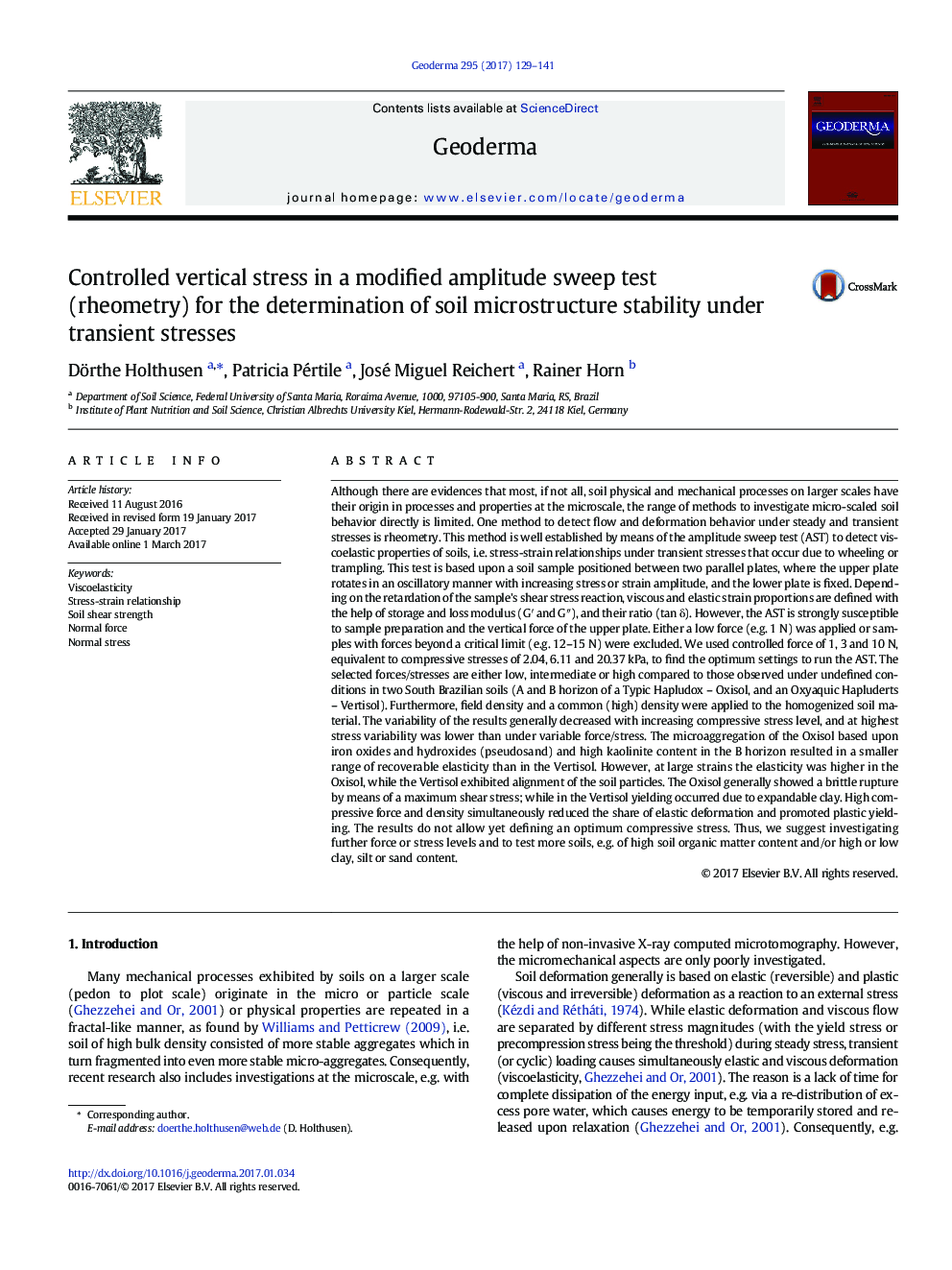| کد مقاله | کد نشریه | سال انتشار | مقاله انگلیسی | نسخه تمام متن |
|---|---|---|---|---|
| 5770681 | 1629422 | 2017 | 13 صفحه PDF | دانلود رایگان |
Although there are evidences that most, if not all, soil physical and mechanical processes on larger scales have their origin in processes and properties at the microscale, the range of methods to investigate micro-scaled soil behavior directly is limited. One method to detect flow and deformation behavior under steady and transient stresses is rheometry. This method is well established by means of the amplitude sweep test (AST) to detect viscoelastic properties of soils, i.e. stress-strain relationships under transient stresses that occur due to wheeling or trampling. This test is based upon a soil sample positioned between two parallel plates, where the upper plate rotates in an oscillatory manner with increasing stress or strain amplitude, and the lower plate is fixed. Depending on the retardation of the sample's shear stress reaction, viscous and elastic strain proportions are defined with the help of storage and loss modulus (Gâ² and Gâ³), and their ratio (tan δ). However, the AST is strongly susceptible to sample preparation and the vertical force of the upper plate. Either a low force (e.g. 1 N) was applied or samples with forces beyond a critical limit (e.g. 12-15 N) were excluded. We used controlled force of 1, 3 and 10 N, equivalent to compressive stresses of 2.04, 6.11 and 20.37 kPa, to find the optimum settings to run the AST. The selected forces/stresses are either low, intermediate or high compared to those observed under undefined conditions in two South Brazilian soils (A and B horizon of a Typic Hapludox - Oxisol, and an Oxyaquic Hapluderts - Vertisol). Furthermore, field density and a common (high) density were applied to the homogenized soil material. The variability of the results generally decreased with increasing compressive stress level, and at highest stress variability was lower than under variable force/stress. The microaggregation of the Oxisol based upon iron oxides and hydroxides (pseudosand) and high kaolinite content in the B horizon resulted in a smaller range of recoverable elasticity than in the Vertisol. However, at large strains the elasticity was higher in the Oxisol, while the Vertisol exhibited alignment of the soil particles. The Oxisol generally showed a brittle rupture by means of a maximum shear stress; while in the Vertisol yielding occurred due to expandable clay. High compressive force and density simultaneously reduced the share of elastic deformation and promoted plastic yielding. The results do not allow yet defining an optimum compressive stress. Thus, we suggest investigating further force or stress levels and to test more soils, e.g. of high soil organic matter content and/or high or low clay, silt or sand content.
Journal: Geoderma - Volume 295, 1 June 2017, Pages 129-141
